Defining “Early Modernists”
In later posts, the subject of “Modernism” is discussed with special reference to its place in the history of painting. One conclusion that emerges is that “Modernism in Painting” has a very different history to other “Modernisms”. For example, despite all they have in common, it is significantly different from either Modernism in Literature or Modernism in Architecture. For this reason, in my books, where others might write “Early Modernists”, I use “Early Modernist Painters”.
Early Modernist Painters
The purpose of this Post is to share with you Chapter 6 of my book “Painting with Light and Colour”. In it I outline the social, economic, scientific and artistic context from which the Early Modernist Painters emerged. I also give plenty of reasons why Modernism in Painting is different from Modernism in other disciplines. To access what I have written about all this and more, please click on the link below.
CHAPTER 6 – “EARLY MODERNIST PAINTERS”
Some examples of Early Modernist paintings
To give some visual context to what I have written, please scroll down to the nine images below of the work of some key Early Modernist Painters. Notice that these include:
- Eduard Manet, Berthe Morisot, Claude Monet and Paul Cézanne from the first generation, all of whom knew each other well from meetings in the home of Berthe Morisot and/or the Café Guerbois where they were joined by Auguste Renoir, Edgar Degas, Henri Fantin-Latour and Alphonse Legros (both students of the influential teacher Horace Lecoq Boisbaudran).
- Emile Bernard, Van Gogh and Toulouse-Lautrec who, in 1886, met in the studio of Fernand Cormon and remained lifelong friends. Not long afterwards, they were joined by John Peter Russel the Australian artist. A big part of his importance to them and others was that, via the teaching of Alphonse Legros, he provided a link with Horace Lecoq Boisbaudran and his ideas on painting from memory.
- Paul Gauguin who, with Emile Bernard, was co-founder of the the Pont-Aven School. Gauguin also had links with Pissaro, Cézanne and Van Gogh, with whom he spent time in Arles.
Something to keep in mind when you scroll down to the images
We all know that reproductions of paintings whether in books or on websites are very different from the originals when we see them in galleries. However, what is less widely appreciated is the degree of difference between the paintings as they are now and the same paintings when first exhibited. Thus, among the Early Modernists, Van Gogh used fugitive reds when mixing purples, with the result that the many purples he made by mixing reds with blues now appear as blues.
But the paintings that suffer the most are those of Seurat. The main reason for this is his extensive use of chemically unstable zinc yellows that have since turned brown. Because Seurat’s theory meant that most of the colours he used had to be, at least in part, mixtures between adjacent colours on the colour circle, these yellows occur in virtually all the greens, yellows and oranges in many of his paintings. The result has been catastrophic changes in appearances.
No wonder it is often difficult to fully connect what we see in some of Seurat’s pointillist paintings (for example, the one found below) with the contemporary descriptions of the excitements produced by the Pointillist method, such as those we find in the writings of Felix Fénéon, the admiring contemporary critic. For example, he writes:
- “A pigment-based hue is weak and drab compared to a hue born of optical mixture: the latter, mysteriously vivified by a perpetual process of recombination, shimmers, elastic, opulent, lustrous” .
- “The multicoloured specks melt into undulant, luminous masses”.
- “The technique vanishes and the eye is no longer attracted by anything but that which is essentially painting” (incidentally, one of the first descriptions of paintings described in purely abstract terms).
While acknowledging the many admirable qualities of Seurat’s paintings as they appear to us today, these comments would now seem a bit over the top.
For more on Seurat’s mould-breaking ideas, see my POST on the Venetian Colourists and in future Posts.
The nine images by Early Modernists
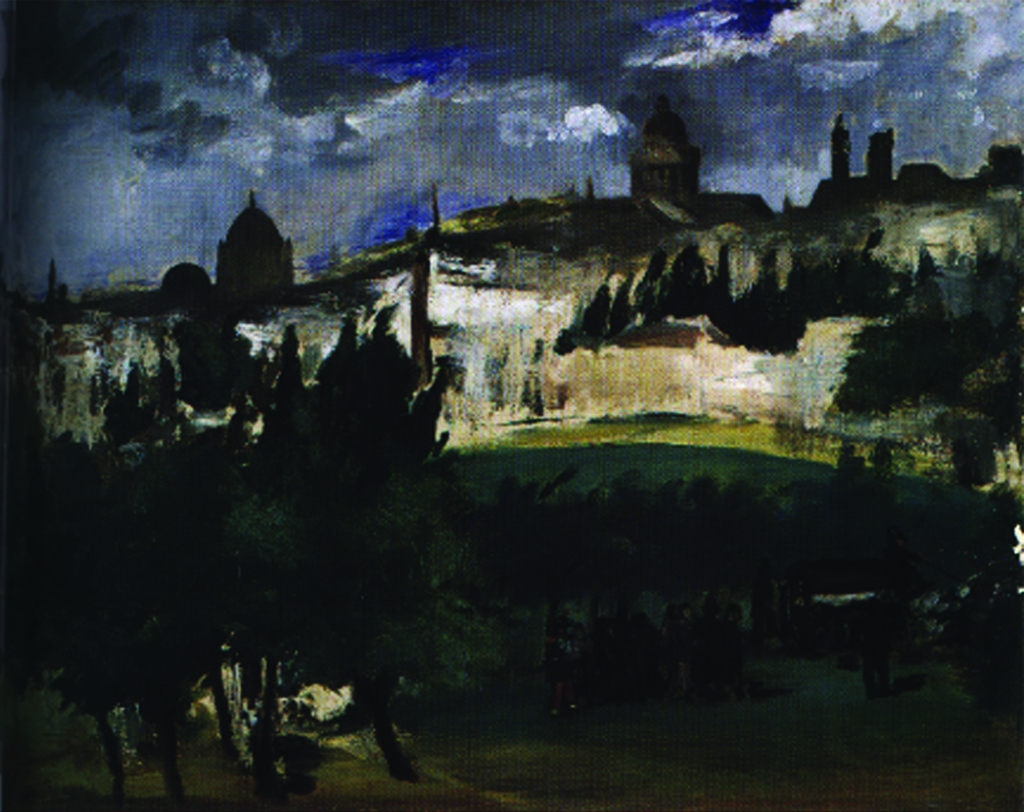
An early Modernist painting by Manet, whom many consider to be the Father Figure of the Early Modernist Painters
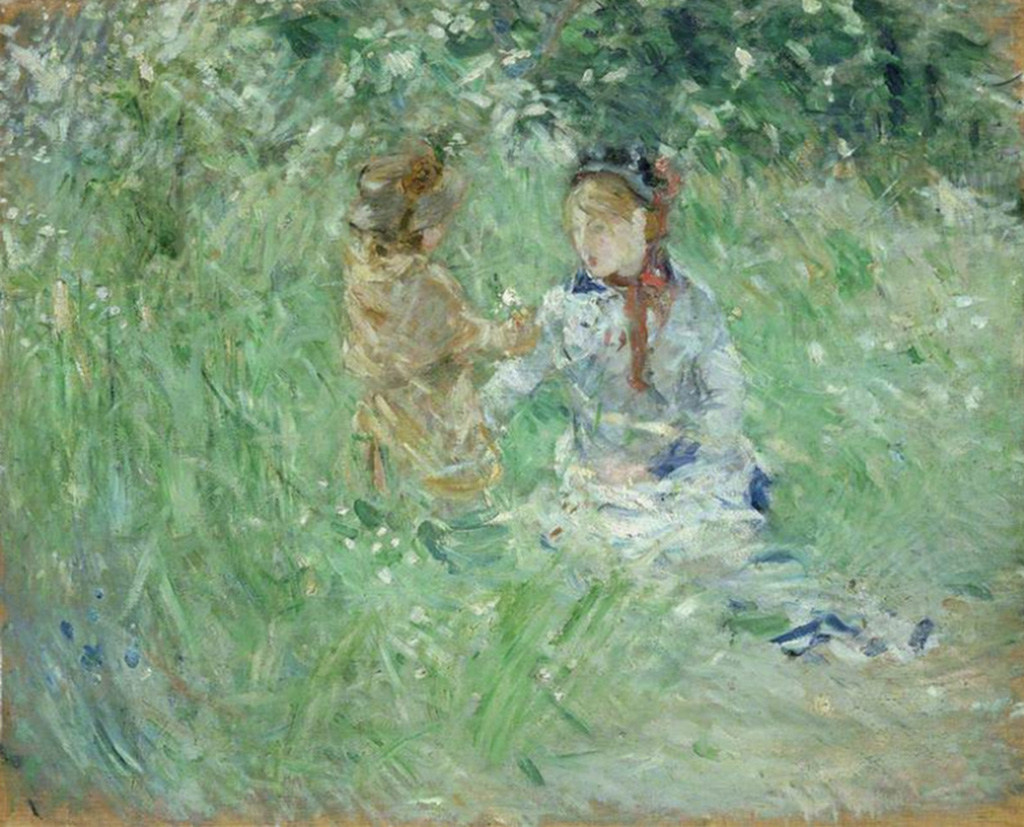
Berthe Morisot – woman and child in meadow at Bougival
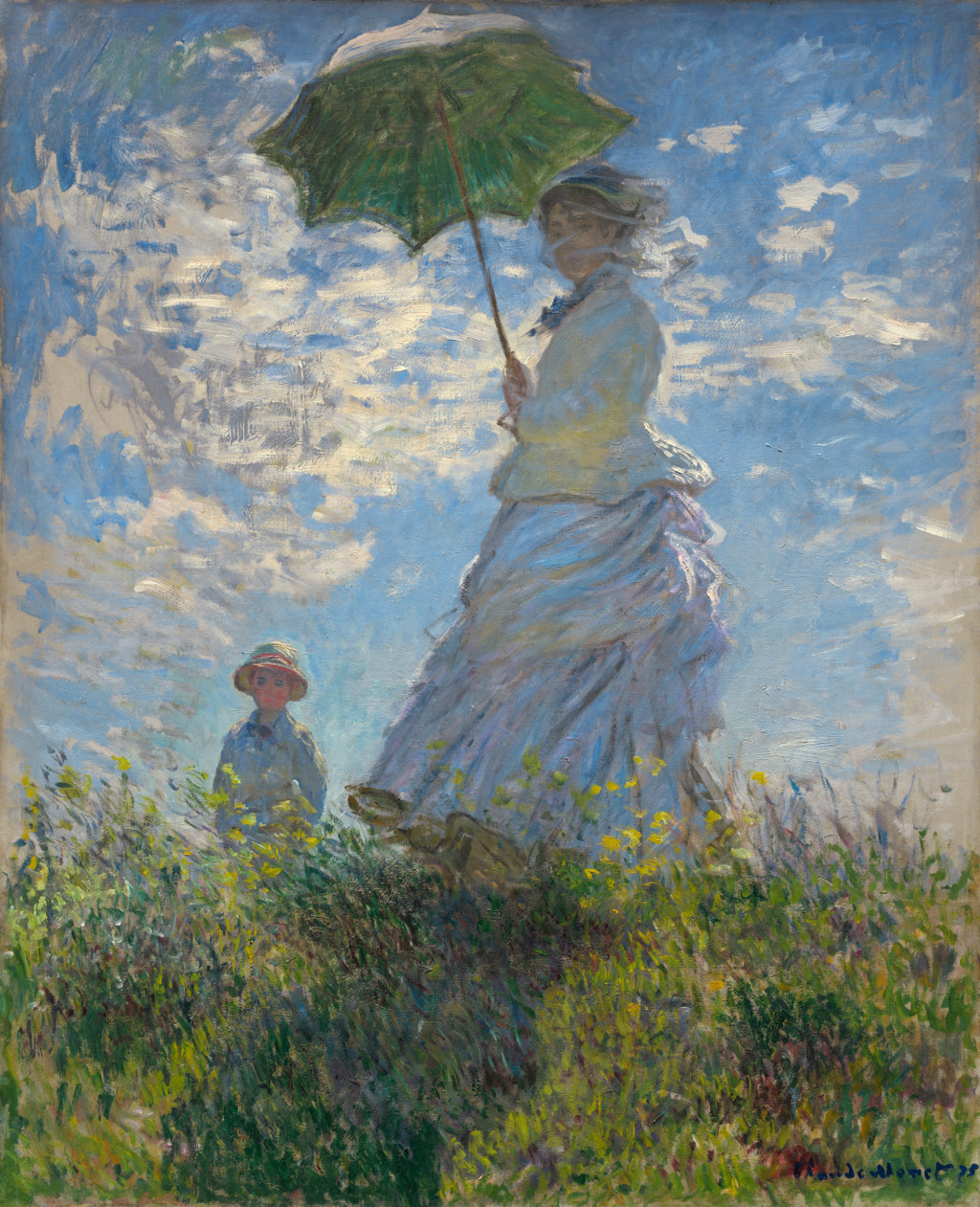
Monet – Woman with Umbrella
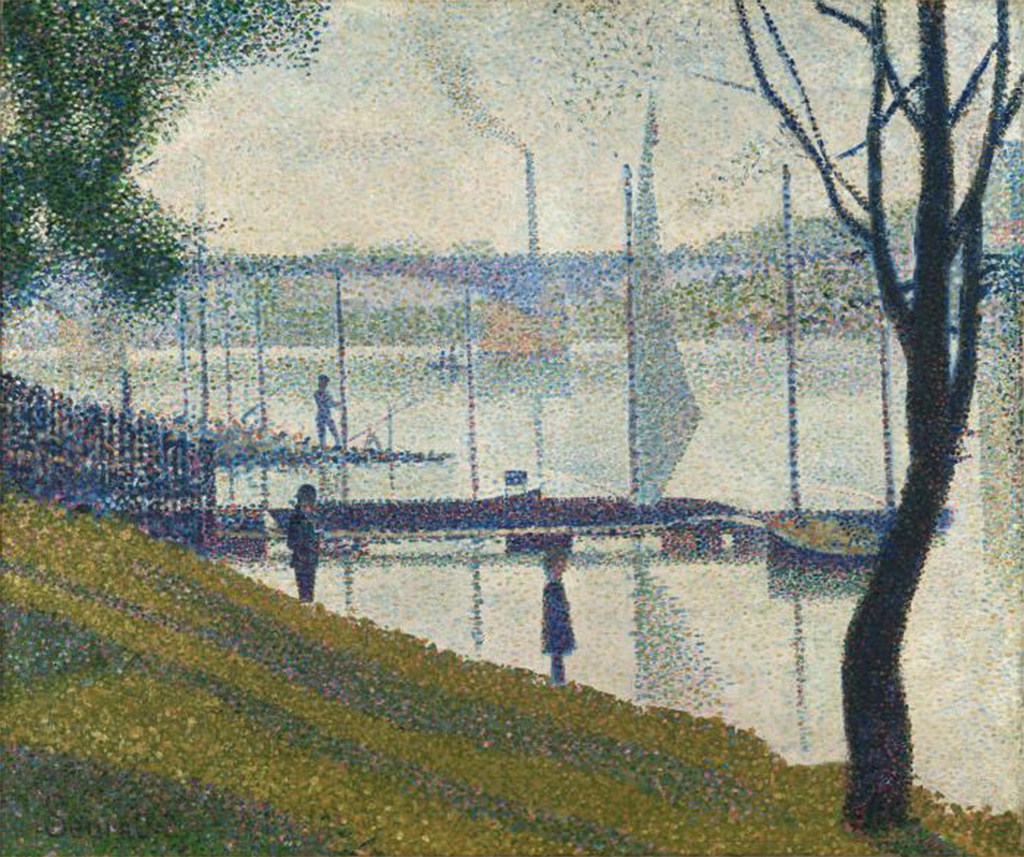
Georges Seurat – Bridge at Courbevoie
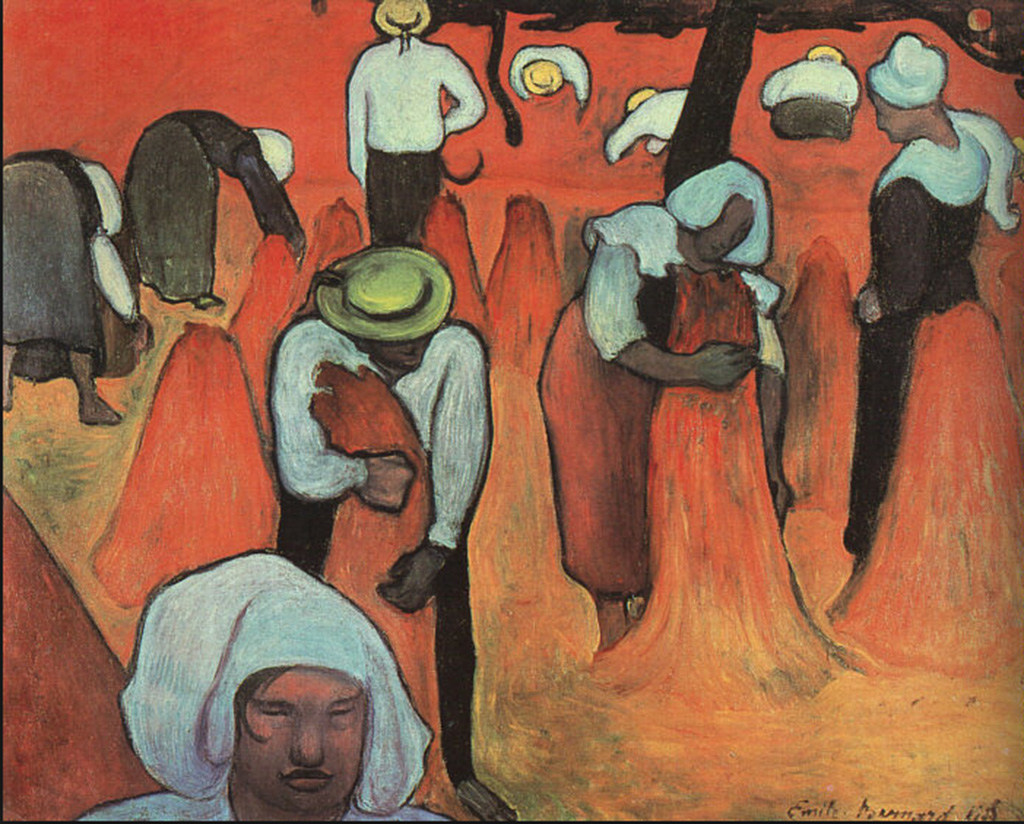
Emile Bernard – Breton Women
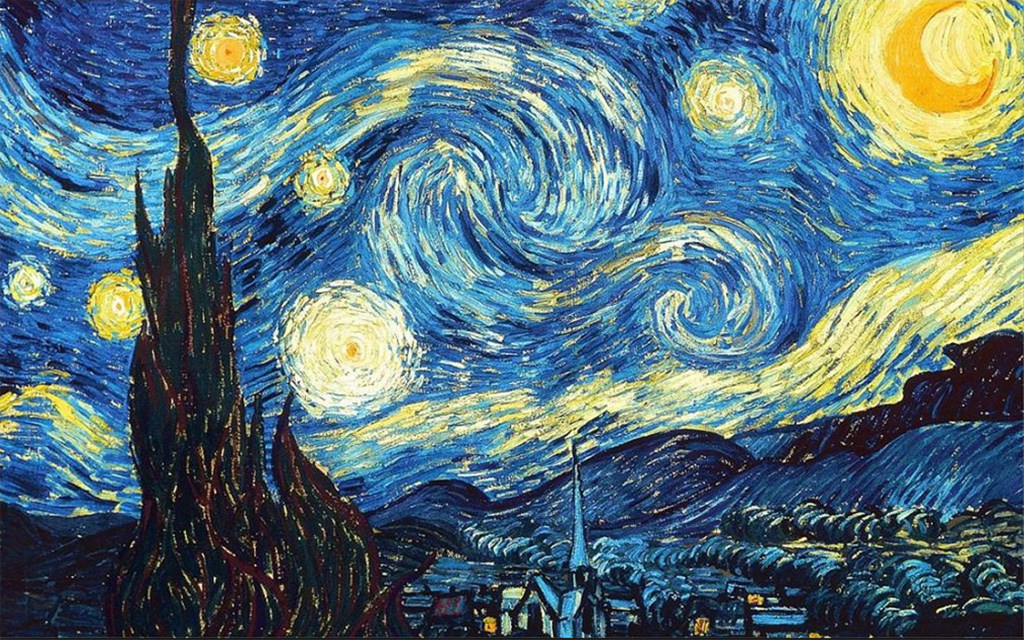
Vincent van Gogh – Starry Night
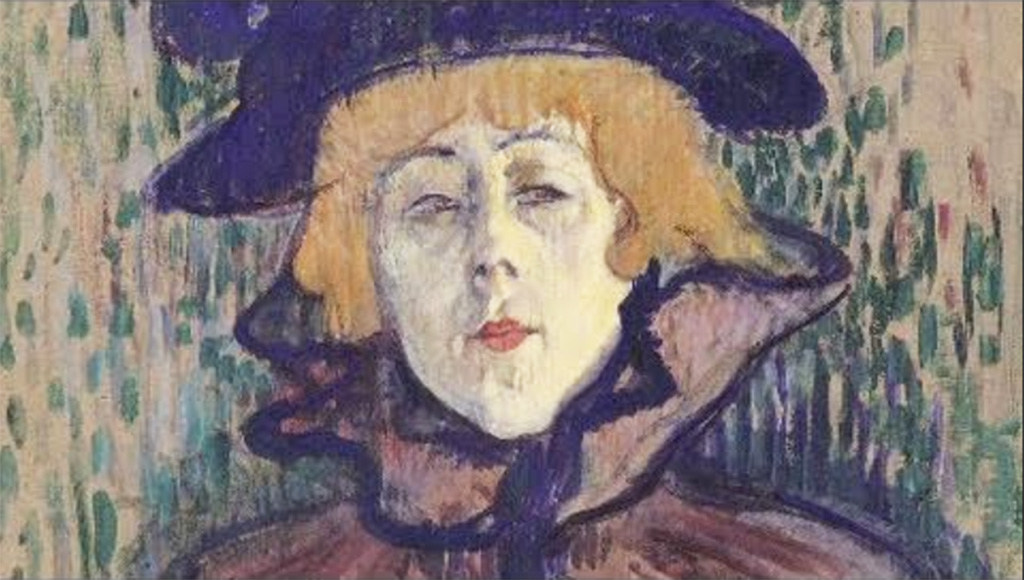
Toulouse – Lautrec – Portrait of Jane Avril
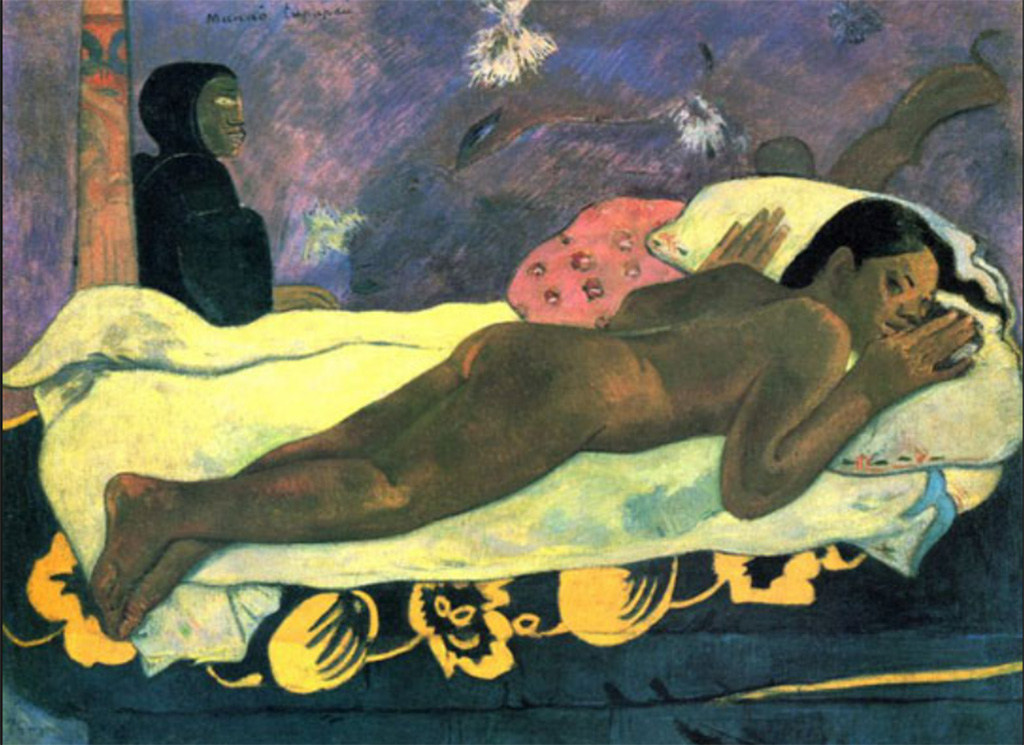
Paul Gauguin – Manao Tupapau

Paul Cézanne – Portrait of Hortense his wife
–
Posts relating to other chapters from “Painting with Light and Colour”:
- Introduction: the little known Science behind many of the original practical suggestions.
- Chapter 1 : The dogmas
- Chapter 2 : “doubts”.
- Chapter 3 : “The nature of painting”
- Chapter 4: Renaissance ideas
- Chapter 5 : New Science on offer
- Chapter 6 : “Early Modernist Painters”
Other Posts on painting light and colour:
- What are colourists (1): Some of the many meanings of the word?
- What are colourists (2): Difference between meaning of the word for Venetian Colourists and for Modernist Colourists?
This is another fascinating post Francis. I imagine many, if not most, people do not realize how some of the colours in Seurat’s paintings have changed over time and how that has affected how we view his paintings today.
Illuminating, forgive the pun , correcting what we see and stimulating to explore these ideas more
Another interesting post, particularly on the colour differences in Seurat paintings now compared with when he painted. Does the same apply to Gauguin? I remember an early excitement about the vibrancy in Gauguin paintings when I was at school.
As far as I can find out Gauguin used relatively permanent colours, but even so it is unlikely that they have remained completely unchanged. However, he did paint with the now almost unavailable emerald green which, apart from being very poisonous, reacts chemically with other colours that he is said to have used, to produce black. All I can say is that, if ever this chemical reaction did effect his paintings, it did not spoil them.
Such a lot to learn still! And that makes me very happy :-). Thank you, Francis!
Thank you, Francis. This is another wonderful insight into the work of a group of very compelling artists. To know more about their working focus and their interactions with each other is helpful and – also, very good reading.
All old reading making me determined to read all I can of your posts.
très intéressée par ces exemples d’applications des nouvelles connaissances
Thought provoking. Thank you for your descriptions and insights.